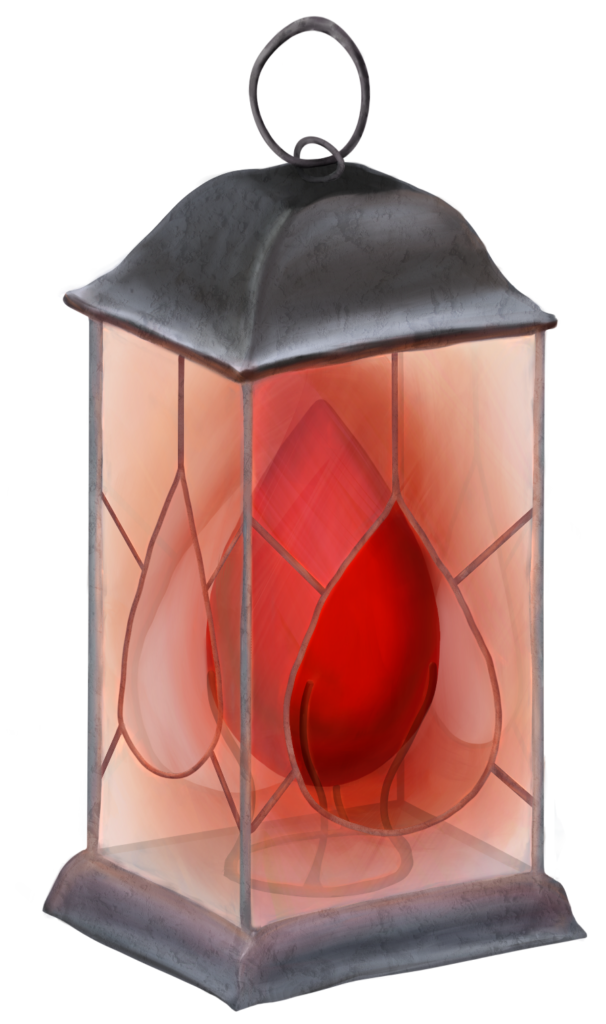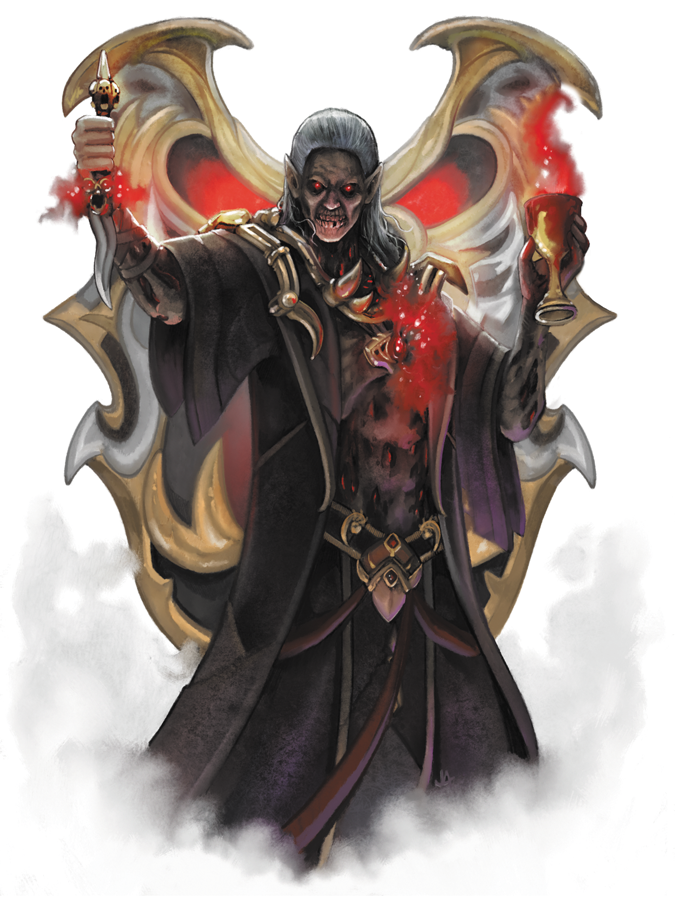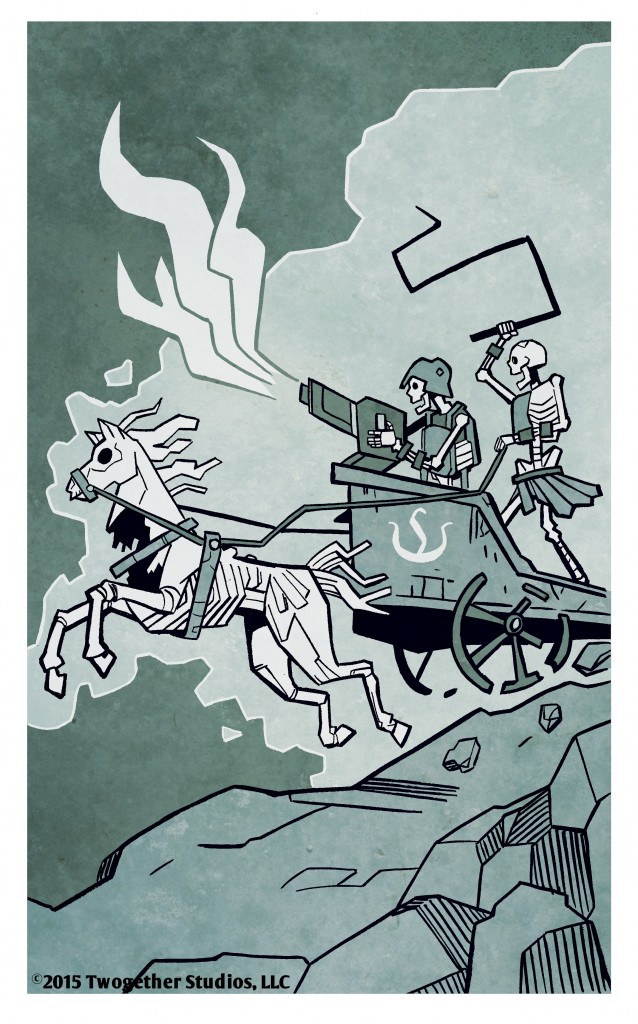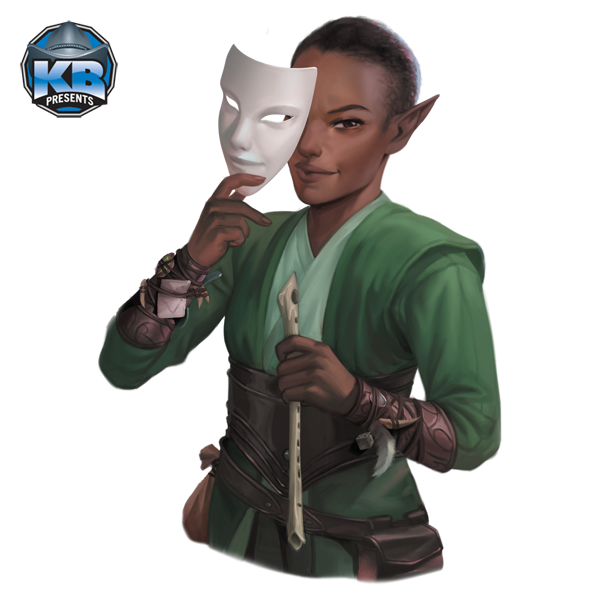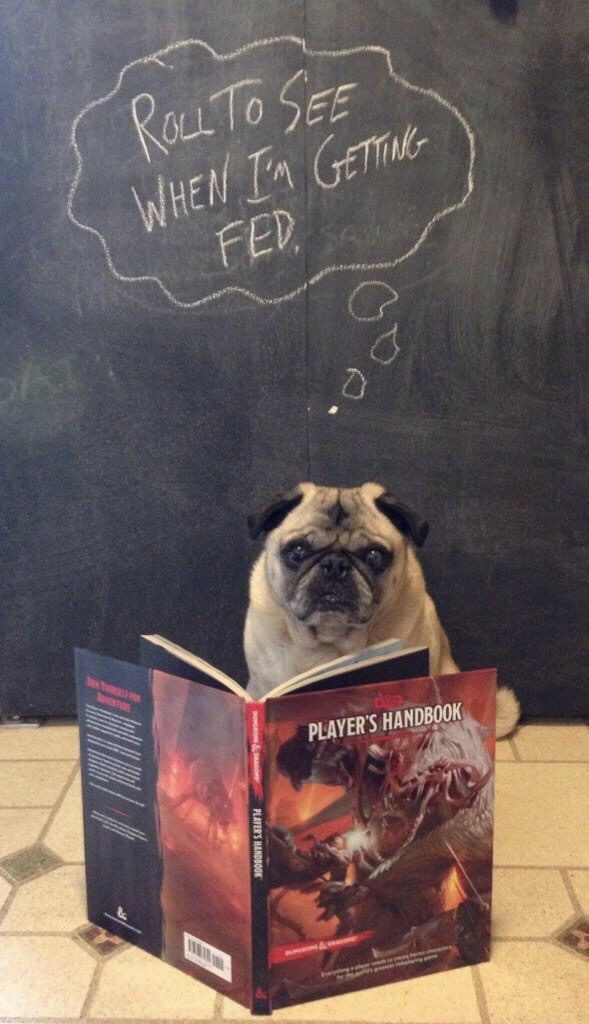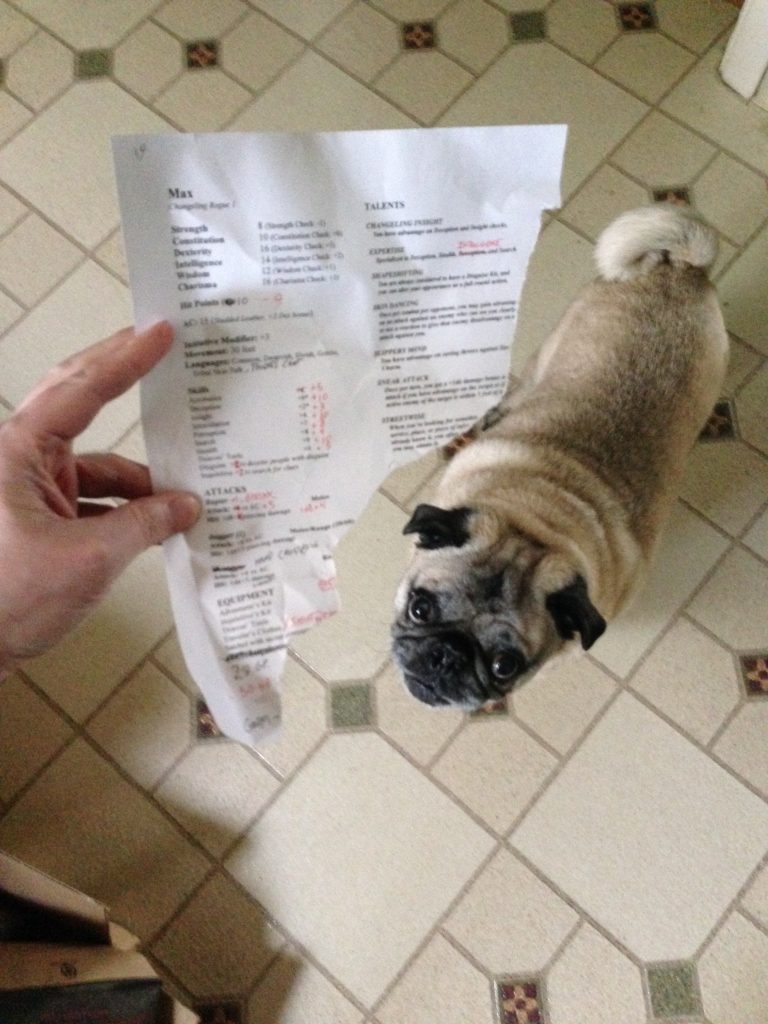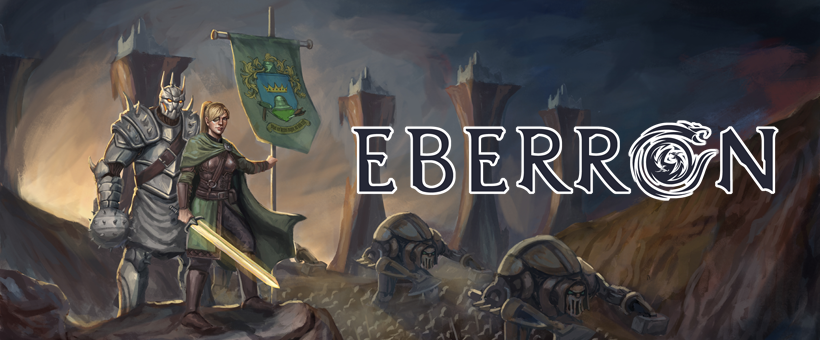
When time permits I like to answer questions posed by my Patrons. Many are simple; others require more thought. It’s taken me a few months to address this question, and you may want to read this article on Atur before you dive into it. With that said…
In your Eberron, who is the Duke of Atur and what do his personal agenda and political aspirations look like?
Delve into the pre-Galifar history of Karrnath and you’ll find references to the “Dark Ages.” This was a time of tyrants and feuding warlords, but the use of dark doesn’t refer to this brutality… rather, it’s a reference to the literal darkness found in Karrnath during this period. There were vast shadow lands, barren stretches where clinging mists obscured the sun. These shadow lands posed a threat even to those who shunned them. Shadows, wights, and other deadly undead would rise within the mists and emerge to threaten the surrounding lands. These shadow lands are powerful manifest zones tied to Mabar. While fighting tyrants and warlords, the first followers of the Divinity Within often took shelter in shadow lands, and they learned how to manipulate the Mabaran energies with their rituals. And over time they found ways to channel these energies—using some of this power to raise skeletons and zombies to help with everyday life, and dispersing additional Mabaran energy in ways that limited its impact on the flora and fauna of the region. The people of the surrounding regions soon learned that the Seekers were useful neighbors—that even if their necromantic practices were disturbing, it was better to have skeletal farmers on the border than bloodthirsty wights crossing it.
The region where Atur now stands is one of the most powerful Mabaran manifest zones in Khorvaire, known in records as the Lake of Sorrows. The necromancer Duran dispersed the shadows of this “lake” and built a fortress for his followers here, and over the course of time this expanded to become the city of Atur. When the other warlords joined together to support the first Queen of Karrnath, Duran chose to stand apart: his loyalty was to his followers and to their faith. While some urged the Queen to destroy the Seekers, she remembered the horrors that once emerged from the Lake of Shadows, and preferred to keep those forces in check. So she negotiated an arrangement with Duran—one preserved to this day, granting Atur the status of a semi-independent palatinate. It was in Atur that Kaius I negotiated with the Seekers of the Divinity Within, and it holds the Vaults of the Dead where most of Karrnath’s undead forces are held in reserve, patiently waiting to return to the battlefield. Despite Moranna’s edicts condemning the Blood of Vol, the crown needs the Seekers to contain the Lake of Sorrows and to maintain the Vaults of the Dead. And so Atur remains a proud Grand Duchy and a stronghold of the Blood of Vol… and the Grand Duke Davian Karla is its ruler.
The Blood of Vol was born from the blending of the traditions of Aereni exiles and human rebels. Davian is a Khoravar who can trace his bloodlines back to Duran the Wise and the shadow-touched towers of Shae Deseir. Though his title of Grand Duke entitles him to use the ir suffix, his parents weren’t nobles and Davian is proud of his lowly roots; he enjoys the discomfort of his fellow warlords when they remember how he earned his title. Because as a palatinate, Atur isn’t bound by the traditions of Karrnath, and the title of Grand Duke isn’t hereditary. It is bound to a second title… Warden of the Lake of Shadows. There is a core of Mabaran energy at the heart of Atur, a force first contained by the Seeker Duran. Binding this power is a crucial part of holding the harmful energies of the region at bay. It is a task that requires tremendous willpower, faith, and an understanding of necromantic science… and the favor of the Lake itself. When the Grand Duke of Atur is lost, any resident of Atur can seek to claim the title. The process is simple. An applicant must descend to a chamber below the great palace, immerse themselves in the ever-spreading pool of shadows… and drive a dagger into their heart. While dying, they must draw the shadows into their body and bind this Mabaran power to their blood. No one lives through this ritual: they will either be reborn as the Warden of the Lake of Shadows, or die in the darkness and be forgotten. Going forward, the Grand Duke is infused with this power. It sustains them, protecting them from age and disease. They are alive—mechanically, using the Reborn lineage. But their body is now bound to the shadow, and they do not heal normally. When they are seriously injured, flesh falls away to reveal the shadow within. Eventually—when shadow outweighs flesh—the Grand Duke will be drawn into Mabar as a wraith. Duran escaped this fate by becoming a lich, but every Warden who’s followed him has eventually been consumed by this darkness.
Davian Karla has been Grand Duke of Atur for 235 years. He was 33 when he claimed the title—a necromantic prodigy, and one of the youngest people to successfully claim the title. He is not as powerful a practical necromancer as Malevanor or the late Gyrnar Shult; but it is his deep understanding of the principles of necromancy and his devotion to the Seeker faith that allows him to contain the Lake of Shadows. He is an elegant Khoravar with pale skin and shining dark hair that he usually wears in a plaited braid. The irises of his eyes are ever-shifting gray, forever reflecting the Lake of Shadows. Davian is tall and thin, but not gaunt; he moves with an easy grace, like water flowing against stone. His fine, dark clothing generally hides his most distinctive feature. During the Last War he lost his left arm and upper left shoulder, along with strips of his left chest and lung. Where once there was flesh, now there is shadow—a misty replica of the limb he once had. While he is conscious, he can choose to make this phantom limb substantial, and so he usually hides it beneath silk and leather. But should he choose, Davian can make his arm insubstantial; there are stories of him reaching into a rivals’ chest and running ghostly fingers across their heart.
Davian’s primary motivation is to protect Atur and to maintain it as a bastion of the Blood of Vol. During the Last War, he played a vital role in negotiating the Seeker alliance with the crown and overseeing the construction of the Vaults of the Dead. In the present day he navigates a difficult path, balancing the resentment of many warlords and their desire to scapegoat the Seekers for Karrnath’s setbacks with the fact that Karrnath needs the Seekers to maintain the Vaults and to contain deadly Mabaran energies. He is equally skilled with intimidation and persuasion; he can play on the fears of those unnerved by his ghostly halflife and the power he possesses, but he can be extremely charming when circumstances require. Atur is a city that celebrates life, and Grand Duke Karla embraces that; he loves poetry and dancing, and often joins his people in the streets during wild nights. While he is angry about how the Seekers have been treated, he does all that he can to maintain his relationship with King Kaius III and Queen Etrigani. He does not seek to expand his holdings, because it is the Mabaran foundation of Atur that ensures no other warlord could ever claim it. But he is determined to maintain its independence and to ensure it remains a sanctuary for the Blood of Vol.
Davian Karla is a committed Seeker. He is not a priest, but his role as Warden of the Lake of Sorrows commands the respect of other Seekers; while he can never fully unlock the power of the Divinity Within, he holds the deadly shadows at bay with the strength of his mind and blood. He has resisted the influence of Lady Illmarrow and despises the Order of the Emerald Claw for tarnishing the reputation of Seekers both in Karrnath and beyond; however, he is in touch with the Crimson Covenant and abides by their commands. As the vessel of the Lake of Sorrows, he cannot travel more than sixty miles from Atur; there is a supernatural gravity tying him to the city, and his body cannot be moved further even against his will.
How powerful is Davian? That’s up to the DM. It could be that he contains the power of the Lake but cannot wield it; likewise, it could be that his necromantic knowledge is reflected by expertise in Arcana but not by practical spellcasting. On the other hand, it could be that he possesses vast power he just almost never exercises. Davian Karla is alive; for now he is a humanoid, not undead. But it could be that he has the power of a Death Knight and could use that stat block. He doesn’t usually wear armor and he’s alive; but he could possess all of the other abilities and traits of a Death Knight. Regardless, he is a skilled swordsman and served in the military before he became Grand Duke; in battle he can choose whether to fight with a weapon or to strike with his phantom grip. His ghostly touch mimics the life drain attack of a wraith: +11 to hit, 4d8+5 necrotic damage, and the target must succeed on a DC 16 constitution saving throw or have their hit point maximum reduced by the damage taken. Again, it could be that this grip is the only dramatic supernatural ability he possesses, or it could be that he is one of the most dangerous beings in Karrnath… who wants to find out?
How would you use him in a story? Grand Duke Davian Karla is a powerful figure working to protect the Seekers and their interests. But aside from the diplomatic maze he navigates, he is also the governor of an important province and has countless duties to oversee and attend to. Beyond this, after two centuries governing the infamous City of Night, Davian is widely known across Karrnath—and he can’t go far from his city. Taking all of these factors together, Davian needs capable agents to help him as he strives to help the Seekers. Depending on their beliefs and allegiances, Davian could support an entire party of adventurers. Alternately, he could be the secret patron of a single Seeker character, providing instructions through spectral messengers (let’s call them “undead drops”). He could push his agents to quietly oppose the Emerald Claw while minimizing the damage the Claw does to the reputation or the Blood of Vol. He could have them help other Seekers in trouble, or acquire necromantic lore or artifacts sought by the priests of the Crimson Monastery. Or he could need help with more mundane issues—dealing with diplomatic rivals or undermining rival warlords.
One question the DM must decide is the relationship between Davian and Kaius III—which in turn depends on the path they’ve decided to take with Kaius. It is possible that Davian is a close confidante of Kaius III, working to help him fight Lady Illmarrow while maintaining the King’s secrets. Or it’s possible that there is a bitter divide between them—that Davian maintains a diplomatic relationship, but doesn’t know the king’s secrets and blames Kaius for the difficulties the Seekers are facing.
If the adventurers oppose the Blood of Vol—perhaps lumping all Seekers in with the Order of the Emerald Claw—then Davian could be a dangerous enemy. Or, in your Eberron, you could decide that Grand Duke Karla has embraced Lady Illmarrow and that he is giving the Emerald Claw a safe haven within Atur. As always, it’s a question of the story you want to tell. Could the Grand Duke of Atur be a powerful ally, or is he a deadly foe?
That’s all for now. If you’ve enjoyed the article, please consider checking out my Patreon! In addition to asking the questions that drive articles like this, my Patreon support directly determines how much time I can spend creating Eberron content in the future. I’m also doing a monthly live Q&A, and Threshold patrons have the chance to play in my ongoing Eberron campaign. Check it out, and thanks to all of you who are already patrons!

